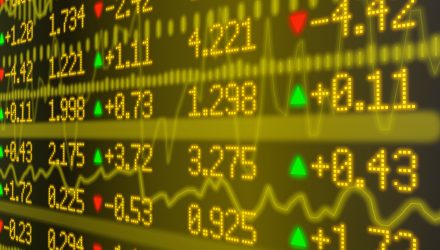Investors are picking themselves up in 2019 after a tumultuous way to end 2018. The Dow Jones Industrial Average fell 5.6 percent, while the S&P 500 was down 6.2 percent and the Nasdaq Composite declined 4 percent.
2018 marked the worst year for stocks since 2008 and only the second year the Dow and S&P 500 fell in the past decade. In 2019, investors are no doubt reassessing their strategies for how to distribute their capital through the rest of the year.
The end of 2018 also spurred a move to bonds as investors sought after safe-haven alternatives amid the volatility. The default bond play to get broad-based exposure might be the iShares Core US Aggregate Bond ETF (NYSEArca: AGG), which tracks the investment results of the Bloomberg Barclays U.S. Aggregate Bond Index.
The AGG gives bond investors general exposure to the fixed income markets, but there are times when current market conditions warrant a deconstruction of the AGG to extract maximum investor benefit. As investors are well aware after last year, volatility makes for a challenging environment in the equities market, but a safe-haven move to the fixed income market also poses its own challenges.
With the fixed income market going through its own growing pains, investors need to know where the growth lies and how to position their portfolios to capitalize on these forthcoming changes.
In the video below, CNBC’s Bob Pisani breaks down some common misconceptions about bond volatility with MarketAxess’ Chris Concannon. O’Shares ETFs chairman Kevin O’Leary and Tim Seymour of Seymour Asset Management weigh in.
For more market trends, visit the Fixed Income Channel.
